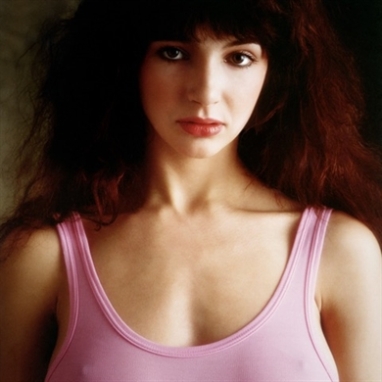
Demo
Album version
Tour of Life (Paris)
1978 was the year of Kate Bush both in terms of her career narrative and the press’s fixation on her. The fansite Gaffaweb records no less than 34 print interviews with Bush from that year alone. It was Bush’s most prolific year for press coverage: the press latched onto every detail they could find about her, as it does, and what couldn’t be directly evidenced was inferred. So Bush was treated like any other “eccentric” media sensation: an object of spectacle having more to do with her perceived ostentatiousness than her actual work.
There are strongly gendered dynamics at play in this. Read Bush’s press around the time and you’ll find all the standard tropes in journalism about women: comparisons to other female artists (Joni Mitchell, Laura Nyro, and Lyndsey de Paul are frequent points of nonsensical comparison), calling Bush a “hippie girl,” and the inevitable objectification of Bush herself (there’s more than one article in which Bush is made the target of a journalist’s foot fetish). The nadir of this fixation came when a promotional photo of Bush taken by rock photographer Gered Mankowitz achieved ubiquity. The infamous picture stages Kate Bush in a pink leotard, hands on hips and gazing soulfully into the camera. It’s a striking image. It also clearly shows one of Bush’s nipples. PR latched onto it, prioritizing it in Bush’s promotional campaign. The Mankowitz photo swiftly became an iconic Kate Bush image, appearing on billboards and public transport across London.
It’s far from a stretch to say nipples were the reason this picture showed up everywhere (the Super Bowl has certainly shown women’s nipples are more of a cultural obsession than men’s nipples). Bush was aware of this, and she was characteristically dismissive of the public’s voyeurism: “I suppose the poster is reasonably sexy just ‘cos you can see my tits, but I think the vibe from my face is there… I think that poster projects a mood.”

Bush’s music has a relationship with sexuality not fought on terms of the media. Indeed, it doesn’t seem to operate on any terms except her own. During her popular heyday, Bush separated herself from women’s lib movements, dismissing feminism as an unappealing “concept” which conjured up images of “butch lesbians” (she hasn’t apologized for this comment, although in recent years she’s finally accepted the feminist label with grace). It’s rare for Bush to explicitly address most arenas of politics in her songs: when she does, it’s either in the form of well-meaning but ultimately colonialist attempts at egalitarianism such as “The Dreaming” and “Pull Out the Pin,” or vapid joke songs like “Ken.” On the other hand, outings with gender politics abound in her songs, in both style and content.
“L’Amour Looks Something Like You” is more useful as an example of Bush’s tendencies in the early part of her career than a particularly good song in its own right. It’s an early song from the Kick Inside sessions which is closer to a standard love ballad than something like “Wuthering Heights” or “The Man with the Child in His Eyes.” “L’Amour” is The Kick Inside’s preoccupation with sexual consumption expressed as a list of reasons to love thee, and as such doesn’t stand out compared to other TKI tracks. Yet what it lacks in conceptual innovation and catchiness “L’Amour” almost makes up for with its sprawling lyrics.
Bush’s songwriting entirely lacks discipline in “L’Amour,” and its maximalism isn’t limited to its title’s self-indulgence. It reads like a Burroughsian cut-up, maneuvering from line to line with awkwardly metered lines such as “my eyes were shining on the wine and your aura/all in order, we move into the boudoir.” There are moments of outright brilliance, such as the chorus line “you look like an angel/sleeping it off at a station/were you only passing through?” There’s also the eccentric use of the indigenous American phrase “Goose moon” (which seems to come from Tlingit and Haida traditions), but beyond that the song’s lyrics are largely remarkable for their sheer horniness. Male rock stars are known for winking at the camera as they belt out lyrics about being told to come when they’re already there, but such moments lack the earnest lustfulness of “L’Amour Looks Something Like You.” It aches for the object of its desires, body and soul, every inch of it filled with need (“I’m dying for you just to touch-A MEEE/feel all the energy rushing right uppa me,” croons Bush). The entire song is a messy sexual rush, and Bush sings it as such — she intones her lyrics more than sings them here, communicating instincts rather than propositions. Sex in Kate Bush songs isn’t a spectacle suitable for billboards: it’s an exercise in hedonism.
Recorded 1977 at London AIR Studios. Personnel: Kate Bush — piano, vocals. Stuart Elliot — drums. David Paton — bass. Ian Bairnson — guitars. Duncan Mackay — organs. Andrew Powell — productions. Pictures: Bush posing, the infamous Mankowitz photo.